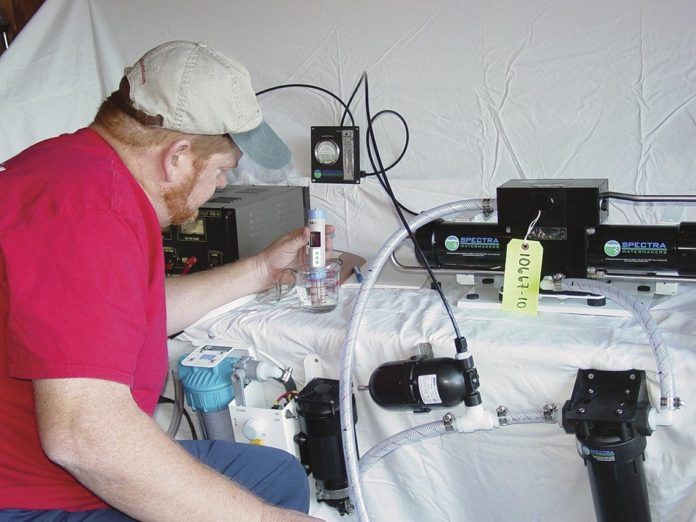Installing a watermaker can be a serious project, and its not to be taken lightly. First, you need to find a suitable location for the system. For those with limited mounting space, consider a modular watermaker.
You also will need to install a dedicated inlet seacock and a through-hull fitting above the waterline for waste brine discharge. And you’ll need to build a manifold system that allows diversion of product water either overboard or into the boats water tanks. The system must be readily accessible, and we recommend including the capability to divert product water to a sink for testing water quality. Of course, you will also need a dedicated, high-capacity, DC electrical circuit protected by a suitable circuit breaker to the watermakers motor.
Being able to easily service all parts of the system is crucial. Pre-filter elements must be changed on a regular basis, and you may also need access for pickling the membrane if the unit is to be stored for long periods.
At the very least, we recommend monitoring product water flow and system pressure with simple analog gauges and flow meters, which may be remotely mounted on a control panel if the watermaker is installed in an out-of-the-way part of the boat.
Maintenance
Ironically, the more you use a watermaker, the less maintenance it requires. A watermaker that is used almost daily essentially requires no maintenance, other than occasional replacement of the pre-filter cartridge.
Current thinking is that it may be less harmful for a watermaker to be flushed with fresh water regularly during long-term storage than the traditional solution of “pickling” the membrane with a sodium bisulfite solution. However, on an unoccupied boat, that means that a fairly sophisticated, electronic, automated controller system must be used to run the flush system on a weekly basis. This also means that the boats battery system must be kept on 24/7. This is all well and good, so long as the boat is plugged into shore power or has a solar panel to keep the batteries up when the boat is unoccupied. (Note that long-term storage of the watermaker in this fashion is not possible where the temperature may drop below freezing.)
In any case, a watermaker that is not used regularly must either be pickled-which must be repeated about every six months if it remains unused-or flushed with fresh water every five days or so. While automatic back-flush systems make this less onerous, any electronically controlled system carries with it the risk of component failure.
For more on watermakers, see Practical Sailor February 2013 head-to-head watermaker test featuring watermakers from Village Marine and Spectra. We also compared a broader range of watermakers in 1998. Many of the watermakers that Practical Sailor tested in the January 1998 issue are still on the market, or in operation today on used boats currently for sale.







































